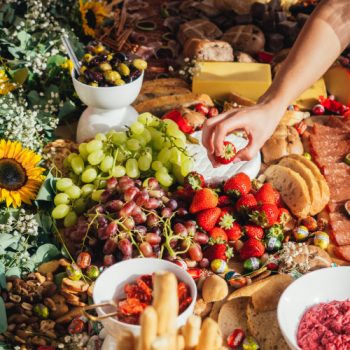
Who is Federico García Lorca
In honor of the Day of Andalusia at the end of this month, we would like to introduce a cultural / historical figure from the south of Spain that you’ll want to know—Federico García Lorca!
 Who is he?
Who is he?
One of Spain’s most emblematic poets, also a playwright and theater director, Federico García Lorca was born in Fuente Vaqueros (a pueblo of Granada) in 1898. He was the first of four children born to Federico García Rodríguez, a wealthy landowner, and Vicenta Lorca Romero, a school teacher and he was raised in rural Andalucía. During his early years, Lorca was what Britannica calls a “hapless student,” but he was talented and ambitious in terms of artistic pursuits such as music (as a pianist and composer), poetry, and prose.
Lorca is perhaps best known for his poetry collections Canciones (Songs, 1926) and Romancero Gitano (Gypsy Ballads, 1928), both of which were well-received and applauded in the literary world for their daring sensuality as well as stylistic and contemporary portrayal of Andalusian society, specifically the life of the gypsy, or Roma, population in Romancero Gitano. The fame brought upon Lorca with these pieces had some negative repercussions as there were parts of Lorca’s life, specifically his passionate relationship with Spanish artist Salvador Dalí, that he did not want in the public eye.
What should you know about him?
Lorca was a prominent member of the “Generation of 1927,” a group of poets and other writers who became popular at the end of the 1920s through important commemorative editions of the poetry of Luis de Góngora. These poets exalted Góngora’s writing style and “densely metaphorical verse” and so chose to commemorate him upon the tricentennial of his death in 1927. For this reason, as well as the decade he spent in the Residencia de Estudiantes in Madrid (a prestigious and socially progressive residence hall), Lorca was well connected with other famous creatives of his time, including but not limited to filmmaker Luis Buñuel, artist Salvador Dalí, and poets Juan Ramón Jiménez, Rafael Alberti, Jorge Guillén, Pedro Salinas, Luis Cernuda, Gerardo Diego, and Dámaso Alonso.
After the success of Romancero Gitano, Lorca suffered the breakdown of his friendship with Salvador Dalí as well as that of of a love affair with sculptor Emilio Aladrén Perojo. These hardships, confounded with increased self-doubt over being pigeon-holed as a gypsy writer, sent him into a deep depression. Lorca struggled with his identity as a successful author who needed to be in public eye while he was battling his own internal torment over his homosexuality. Around the time Dalí met his future wife, Gala, Lorca left Spain to visit the USA and Cuba, where he lived from 1929-1930 and wrote Poeta en Nueva York (Poet in New York, 1940) and El público (The Audience, unproduced until 1978).
Lorca’s literary career (which is far vaster than we’re able to get into here—be sure to check out our resources for further detail) was cut short due to the political and social tensions of the Second Republic that led into the Spanish Civil War. In 1936, at the very beginning of the Civil War, Lorca was arrested and removed from his home by Nationalist authorities, imprisoned without trial, and reportedly shot on a remote hillside a few kilometers outside of Granada known as Fuente Grande (Great Spring) just two or three days later. The true motivations behind his assassination have never been completely verified but the general consensus is that he was abhorred by the Nationalists for his homosexuality and liberal views.
What are his ties to Spain and where can you find him?
Lorca’s ties to Andalucía run deep and he is especially important to us here in Granada where numerous schools, parks, and even the airport is named after him! Some of the specific places you can find that pay homage to Lorca here in and around Granada include:
 Parque Federico Garcia Lorca: In the Granada city center (just one block north of the intersection of Recogidas and Calle Arabial) you can find this park, built around one of his childhood homes Huerta de San Vicente, which has been turned into a museum that you can visit any day other than Monday.
Parque Federico Garcia Lorca: In the Granada city center (just one block north of the intersection of Recogidas and Calle Arabial) you can find this park, built around one of his childhood homes Huerta de San Vicente, which has been turned into a museum that you can visit any day other than Monday.
Monument on Avenida de la Constitución: Take a wander a bit further down Gran Vía (Main Street) to where it turns into Avenida de la Constitución and you can spot a sculpture of the poet sitting on one of the benches. (We won’t tell if you use it as a selfie opportunity with one of Granada’s most beloved poets.)
Parque Federico García Lorca in Alfacar: This park, located near Fuente Grande where Lorca is said to have been shot (despite 2009 excavations’ failure to locate his body), includes an olive tree and stone memorial that ‘marks’ (figuratively, if not literally) the grave of Lorca and where flowers are laid each year during an annual memorial on August 17th.
You can also find Lorca in other places around Spain such as the statue prominently located in Madrid‘s Plaza de Santa Ana as well as wherever his words may take you through his literary works.
Resources used:
https://www.britannica.com/biography/Federico-Garcia-Lorca
https://www.britannica.com/topic/Generation-of-1927
https://en.wikipedia.org/wiki/Federico_Garc%C3%ADa_Lorca
https://www.biography.com/people/federico-garc%C3%ADa-lorca-9386246




